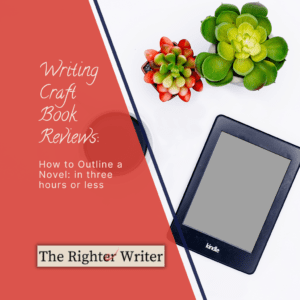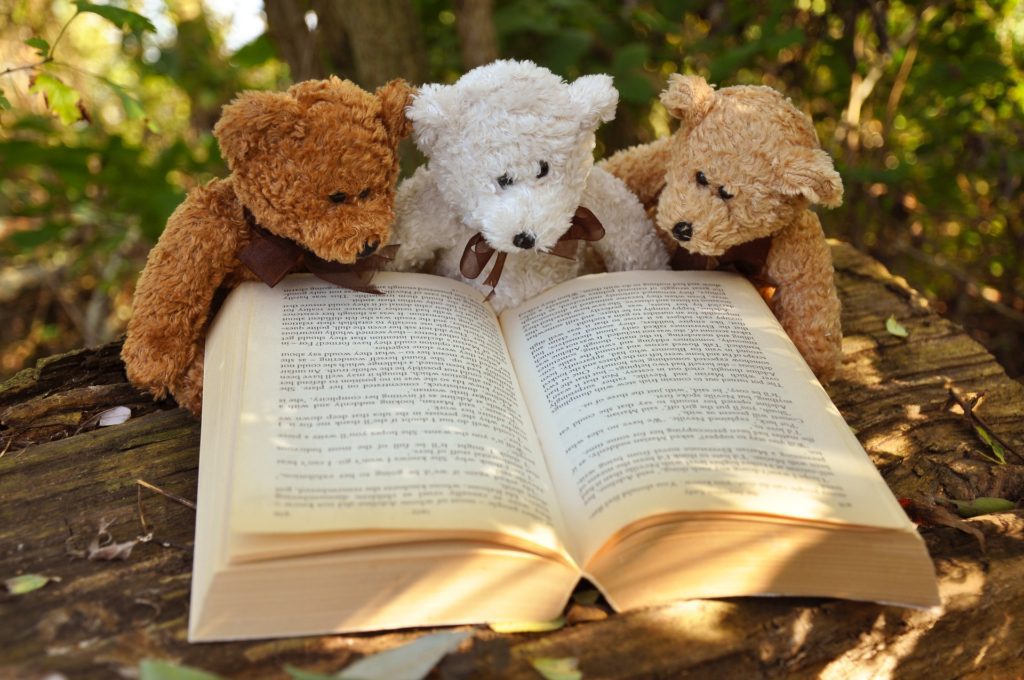
Writing Craft Book Reviews: A Book A Week
Fourth and last (for now!) in our series of book reviews featuring Kindle Unlimited books that explain ways to outline a novel. Let’s get ready for NaNoWriMo!
I'm an affiliate.
Some of the links on this page are affiliate links, but the opinions in my posts are my own, and I only mention products that I like and use myself. As an Amazon Associate, I earn from qualifying purchases. What that means is that if you click one of the links on my site and make a purchase, I might recieve compensation at no extra cost to you.

Adjectives.
They’re one of the most commonly used words in the English language, and for good reason—they add nuance, color, and life to our writing.
But there are so many types of adjectives that it can be tough to know when and how to use them correctly.
These are the adjectives that you probably use without even thinking about them:
Articles are also considered adjectives that help to describe nouns.
There are two types of articles: a/an and the. A or an is used to describe a general or nonspecific noun, and the is used to describe a specific noun.
A boy is playing on an elephant. (It’s a nonspecific boy and a nonspecific elephant.)
The elephant is drinking. (We introduced the elephant in the last sentence, so we use the because we know it’s that specific elephant.)
A demonstrative adjective is a word that points out something or someone.
The words this, that, these, and those are all in this category. To give information about where the thing is, you add a demonstrative adjective in front of the noun.
This elephant is drinking, but that elephant is not. (There are two elephants. This one is close by, and that one is far away.)
Those boys are looking at the elephants. (Over there, far away from the speaker, there is more than one boy.)
A quantitative adjective provides information about how much or how many of something there is.
This type of adjective is used to ask questions about quantity. Examples are all, any, enough, few, half, little, more, much, several, some, whole, etc.
There are two elephants. (Numbers are quantitative adjectives.)
Is that enough elephants?
There are too many boys to ride the elephants.
An interrogative adjective asks a question and must be followed by a noun or a pronoun.
The interrogative adjectives are which, what, and whose.
Which boy is playing on the elephant next?
Whose elephants are these, anyway?

A possessive adjective shows that something belongs to someone or something.
Some of the most common possessive adjectives are my, his, her, our, their, and your. The word its is a possessive adjective that I use a lot.
(Please notice that there is no apostrophe when you’re saying that something belongs to something else!)
Unlike possessive pronouns (mine, his, hers, ours, theirs, its, and yours), these adjectives always come before a noun.
Those are my elephants!
Why is that boy taking off his shoes?
Proper adjectives are the adjective form of proper nouns. When proper nouns modify or describe other nouns/pronouns, they become proper adjectives.
Proper adjectives usually have the same capitalization as the original proper noun.
Oh, he has Nike shoes.
These are Indian elephants.
Time for lunch! It’s Mexican food.
An indefinite adjective describes a noun without being specific. It provides general information about the noun.
Some indefinite adjectives that you probably use a lot are few, many, much, most, all, any, each, every, either and nobody.
Do you want some chips?
Well, I think most elephants would try guacamole, but I bet not many would like it.
No, nobody is allowed to feed salsa to the elephants.
Most adjectives are descriptive.
Descriptive adjectives are exactly what they sound like – they describe an object or person.
It’s getting dark.
The boys are tired.
Both elephants are hungry.
A compound adjective is an adjective that is made up of two or more words.
These words work together to describe a noun (or sometimes another adjective).
They are usually written with hyphens or in quotation marks.
We thought the day would be mind-numbingly boring, but it was actually fun. (In this case, mind-numbingly is describing the adjective boring.)
They were such well-behaved boys.
And rock-steady elephants!
When compound adjectives are in front of the word that they describe, they’re hyphenated. When they follow the noun, though, they don’t need hyphens.
The boys were well behaved.
And the elephants were rock steady!
The positive degree is used to describe a quality without comparing it to anything else:
This is a big elephant.
The comparative degree is used to compare two things.
This elephant is bigger than that one.
The superlative degree is used to compare three or more things.
This is the biggest elephant of all.
Adjectives can also have irregular forms, which you’ll just have to memorize.
For example, good becomes better in the comparative and best in the superlative. (Others are bad, worse, and worst; many, more, and most; few, less, and least.)
To the untrained eye, adjectives all might seem the same.
But there are actually two main types of adjectives: descriptive and interpretive.
Descriptive adjectives are, quite simply, adjectives that describe. They might describe the color of something, its size, its shape, or any other physical characteristic.
Interpretive adjectives, on the other hand, also describe something, but they also express a speaker’s opinion or interpretation.
For example, if someone calls a review “shocking,” they’re using an interpretive adjective.
In general, interpretive adjectives are considered more subjective than descriptive adjectives.
Some types of adjectives look like descriptive adjectives at first glance, but they are actually more subjective than you might think.
What about the word tall?
He was a tall man.
If I’m reading this description, and I’m only five feet tall, I might think that this person was maybe five feet seven inches because that’s a lot taller than I am.
If the reader is six feet tall, though, they might imagine someone who is even taller than they are.
So the two readers are interpreting the same word differently.
We come across the same problem with adjectives like pretty, boring, sweet, fat, loud, annoying, painful, etc.

So how do we use adjectives to convey a specific meaning to our readers without getting lost in subjectivity?
It depends on what you’re writing.
If you are writing non-fiction, one choice is to keep the facts 100% factual and the subjective descriptions 100% subjective.
Here’s an example.
Say you are describing someone that you are interviewing. You could just say that he was tall and friendly.
Or, you could be specific and factual about part of the description and then make it clear that the rest is your opinion.
He is six foot three. That’s a lot taller than my five foot five, but he was so friendly during the interview that I never felt intimidated.
Look at how the description of tall is very specific.
The description of how friendly the guy was is subjective, and the reader can tell that because the writer talked about their own emotions (I never felt intimidated).
If you are writing fiction, though, sometimes you might want to skip the adjectives altogether.
Take a look at these sentences:
She ducked to get through the door.
He stood on tiptoe to put the cup in the cupboard.
How tall are these characters? You can tell by their actions, right?
If I had said that she was tall and he was short, would you have gotten the same idea of how tall or short and, more importantly, how their height might have affected their lives?
In fiction, readers want to know more about the characters than what they look like!
We want to know their personalities, how they see the world, what they are feeling.
Your adjectives should be doing double duty: telling readers what’s happening both outside and inside the characters. Picking just the right adjective, either when you’re describing your character or having your character describe something else, can do that.
Here is an example:
Character 1: That nasty house? It’s a dump, and it stinks! It’s so gross!
Character 2: That shabby house? It’s dingy and rank! It’s so disgusting!
These sentences are about the same house, they use the same pattern–all that has changed are the adjectives.
When you imagine the characters that would use these lines, I bet they are very different characters, right?
That is the power of choosing just the right word.
Sometimes, using adjectives effectively is more about what you leave out than what you add.
There is such a thing as using too many adjectives or using them in place of more accurate verbs.
But how can you tell if an adjective is really needed?
In general, if you can take out the adjective and the sentence doesn’t change, then it’s probably not needed.
Think about this sentence:
She walked on the fresh green grass.
Does this sentence really need the words fresh green? Grass is usually green, so a reader’s assumption is that the grass is green.
If we take out the adjectives, the sentence doesn’t lose anything.
Adjectives become important when they contradict the reader’s assumptions. If the reader assumes the grass is green, the only time we need an adjective is when that’s not true.
She walked on the grass.
Hold the picture of that in your mind and contrast it with this:
She walked on the dry brown grass.
Now the sentence brings to mind an entirely different image, right?
They add flavor and detail, making writing more interesting to read. But not all adjectives are created equal.
It’s important to use the right type of adjective for the job, depending on what you’re trying to achieve.
In this post we went over both the grammar of adjectives and the art of using them.
Have you tried using adjectives in your own writing? Let me know in the comments how you use them!

Fourth and last (for now!) in our series of book reviews featuring Kindle Unlimited books that explain ways to outline a novel. Let’s get ready for NaNoWriMo!

Third in our series of book reviews featuring Kindle Unlimited books that explain ways to outline a novel. Let’s get ready for NaNoWriMo!

Second in our series of book reviews featuring Kindle Unlimited books that explain ways to outline a novel. Let’s get ready for NaNoWriMo!

I help authors, researchers, business people, students, and web marketers to polish their writing before they send it out into the world.
